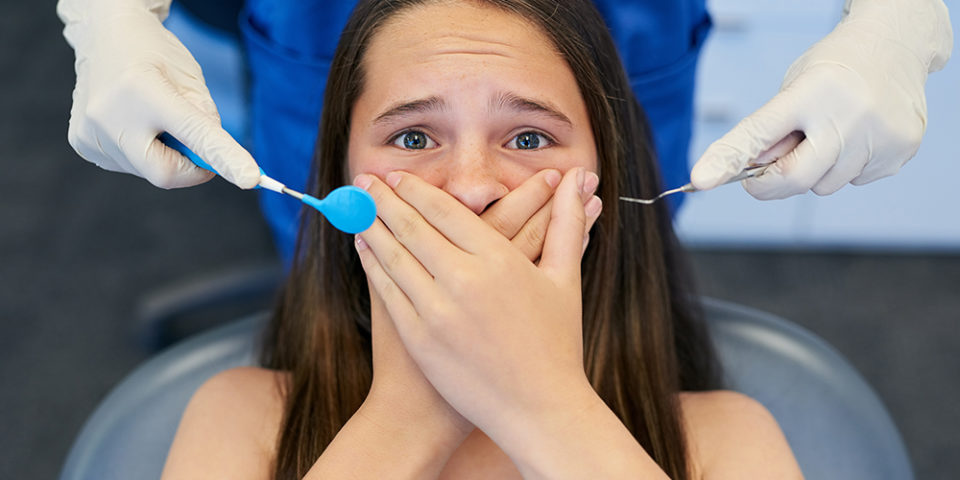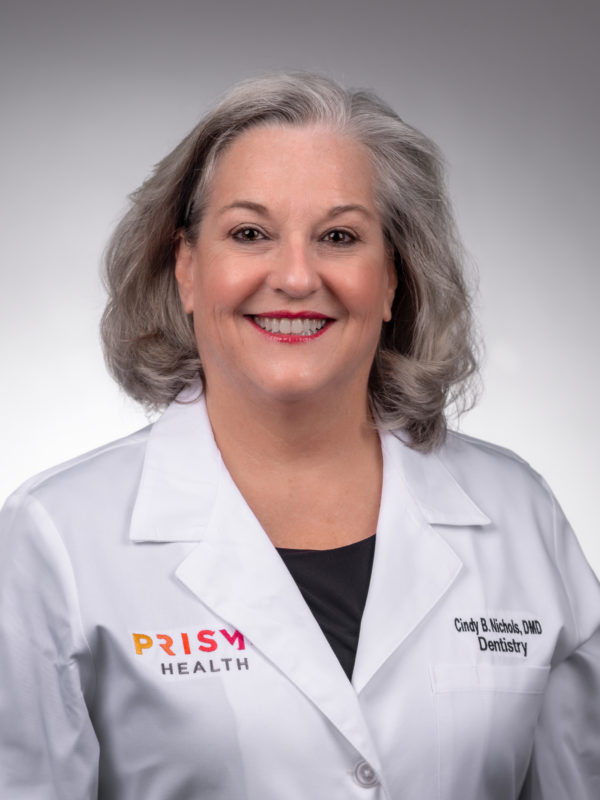How to help dental anxiety in children and adults
Whether you’re making a dental appointment for yourself or for a young child, it’s normal to feel a little nervous about the upcoming procedures. However, dental anxiety can lead to neglecting essential care of your teeth, tooth decay, cavities or even the need for tooth extractions.
Cindy Nichols, DMD, offered a few pieces of advice to lessen your dental anxiety and help maintain healthy teeth and gums.
First off: it’s normal to be nervous, but not to be afraid
“It’s very common for children and adults to feel nervous or anxious before a dental appointment,” said Dr. Nichols. “And dental phobia, which is an escalation of those nerves into being outright afraid, is very real.”
Dental professionals, she continued, are empathetic to those who feel scared or anxious about the dentist and understand that most dental phobia stems from having experienced an unpleasant or painful dentist visit in the past.
With modern advances in dentistry, patients should be able to experience their usual twice-yearly cleanings or appointments to fill a cavity or check on a toothache without pain or much discomfort.
Make your first visit low-pressure and low-key
“Pain is not intended to be a normal part of a dental procedure,” said Dr. Nichols. “And one way that we have been able to help our patients who struggle with dental phobias or anxiety is to schedule visits that aren’t procedure-based.”
In these visits, which might involve simply receiving X-rays, discussing your dental history and needs or another low-pressure meeting with your dentist, you’ll become more familiar with the office. These visits are especially important for young children, who should begin seeing the dentist regularly as soon as their teeth come in, usually around one year old.
Even if your child hasn’t made it to the dentist in the baby years, it’s never too late to schedule that initial introductory visit. Pediatric dental visits often involve a ‘happy’ visit, where the child can come in and get used to the sounds, the smell and the people in the office, as well as getting a look at the types of tools and machines that might be used during a tooth-cleaning.
This level of familiarity helps to lessen anxiety, and it can be just as useful for adults who struggle with dental anxiety as it is for kids!
Controlling discomfort can provide relief from anxiety
“On an absolutely routine basis, we use dental anesthetics and other options of pain relief to make dental procedures much more comfortable than they were in the past,” said Dr. Nichols. “And some procedures, like cavity fillings, might be completed faster than you remember, especially if it’s been a long time since your last visit.”
Methods dentists use to control pain and discomfort include:
- Topical anesthetics, usually applied with a swab, are designed to numb the specific area where dental work is being performed. Often, lidocaine is the numbing agent used.
- Local anesthetic applied by injection into the gum close to the specific place requiring dental care.
- Nitrous oxide, also known as laughing gas, is commonly used in pediatric dental care but is often available in adult dental care, too. Inhaled through a specially designed mask, nitrous oxide relaxes the patient and lessens anxiety and fear. Effects wear off quickly, and patients can often drive shortly afterward, unlike other forms of anesthesia.
- Intravenous sedation is sometimes available during extensive treatment, or if the patient is struggling with a severe dental phobia. This involves pain relief injected through a vein in the patient’s arm or hand. Not all dental offices are licensed for IV sedation, so if this is something you require, you’ll want to call in advance and ask.
- With general anesthesia, the patient is “put to sleep” for the procedure. Usually, any dental treatment that requires general anesthesia will be performed in a hospital setting, not in the dentist’s office, as general anesthesia has certain risks that require close monitoring.
- Oral sedation involves pain relief provided by pills swallowed by the patient. With a delayed onset and a longer time for the potentially significant drowsiness or other side effects to wear off, these are less commonly used.
Talk to your dentist! Find out more about your options
“As dentists, we never, ever want your experience to be scary or unpleasant,” said Dr. Nichols. “And we’re happy to work with our patients to help them build confidence to make the experience more pleasant for everyone involved.”
Dental visits should be scheduled at least once per year, but ideally about every six months. Regular visits help to locate small cavities before they become larger problems. Keeping your teeth and gums clean and healthy can help ensure that your future dental visits are short, sweet and positive for everyone.
Find a doctor
Whether you’re looking for a primary care physician or need to see a specialist, we’re here to help with experienced, compassionate care near you.
Find a Doctor

